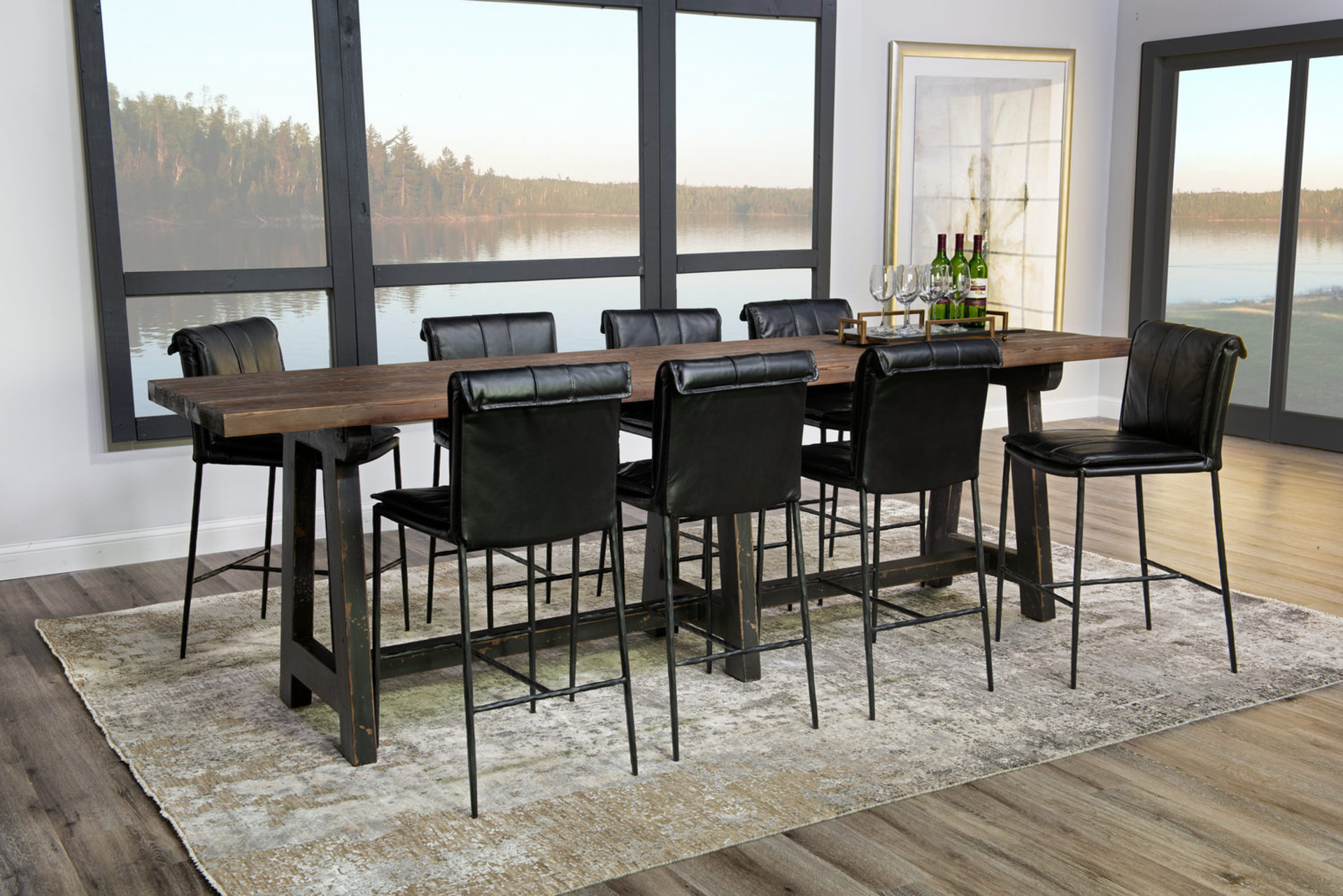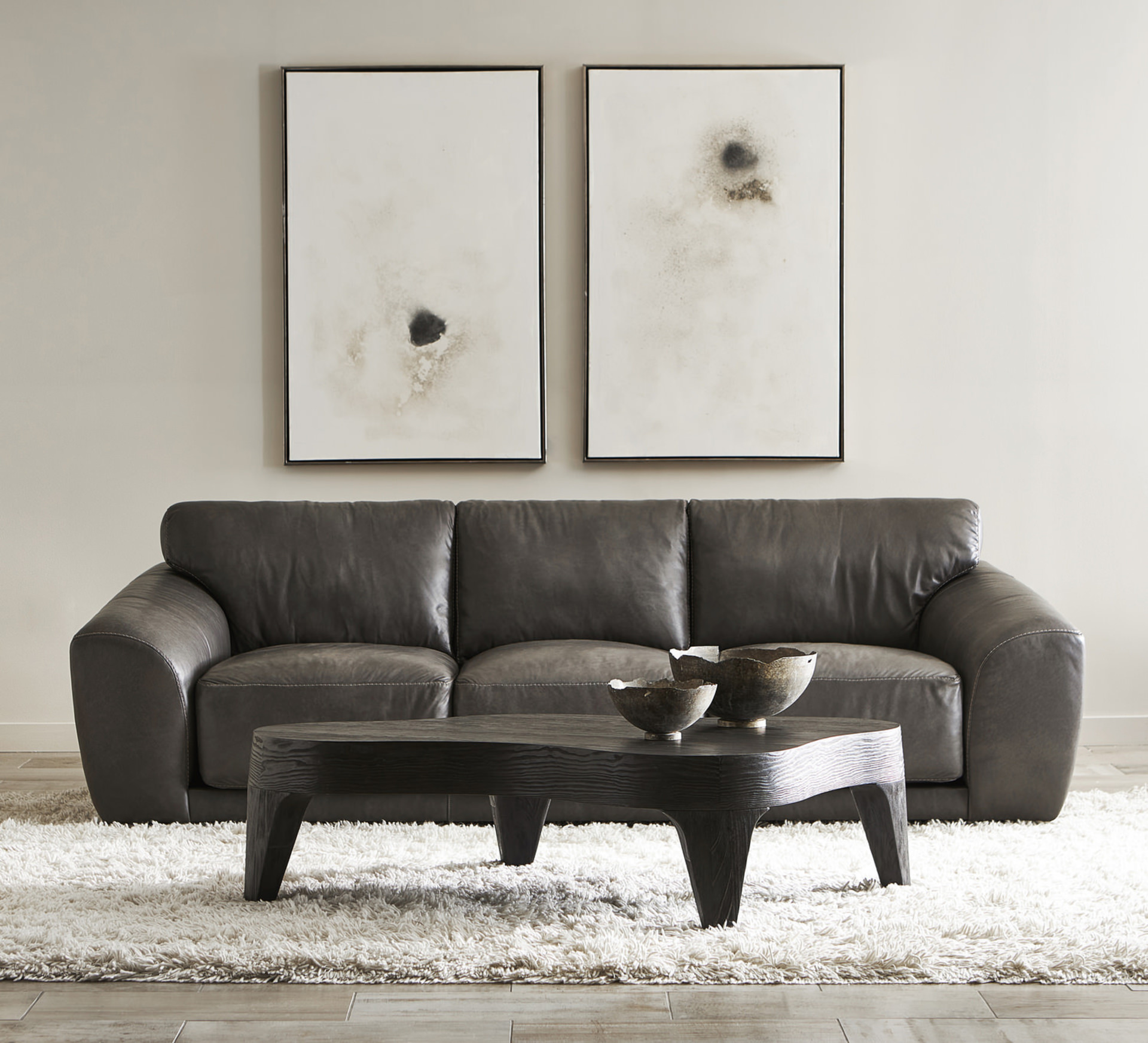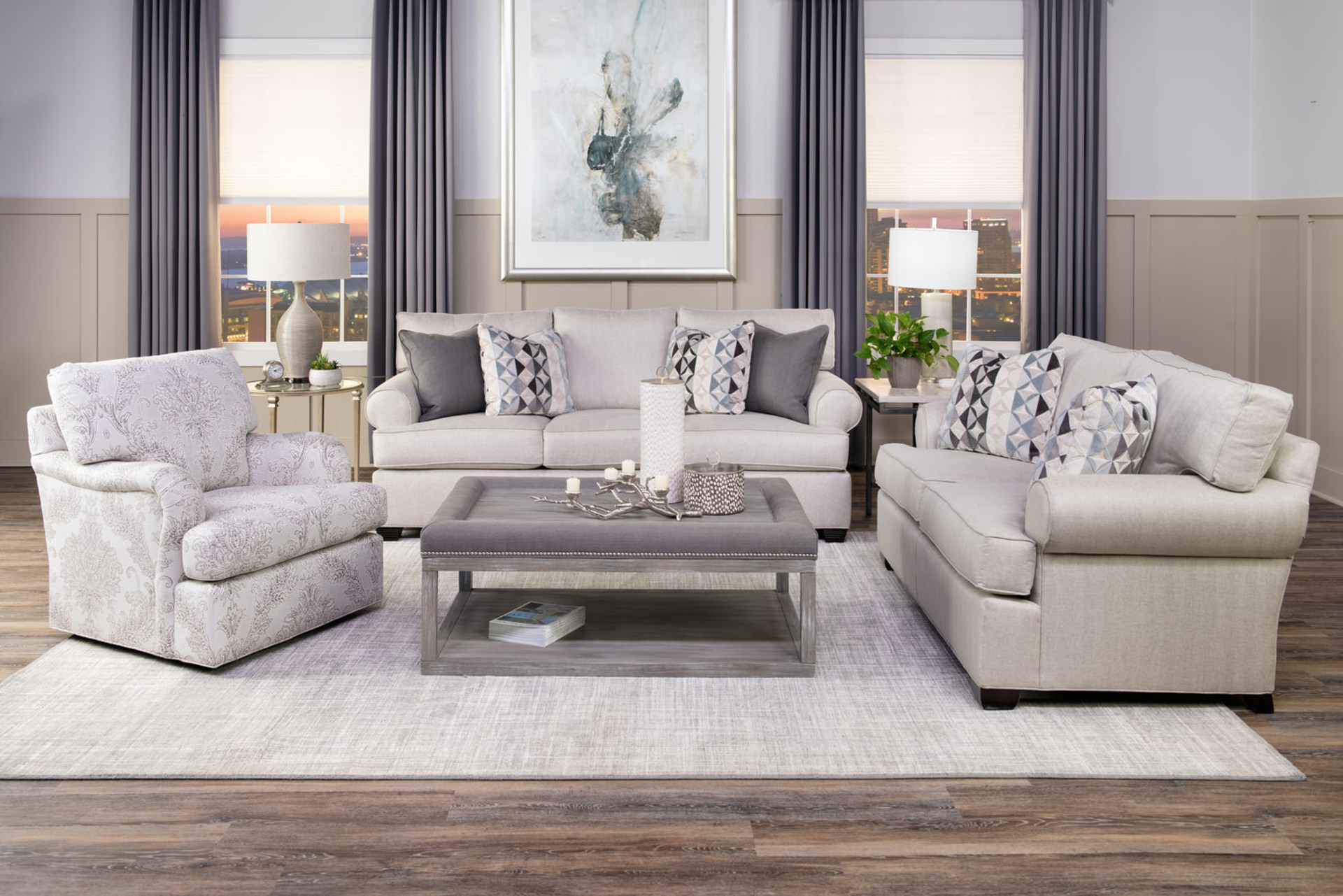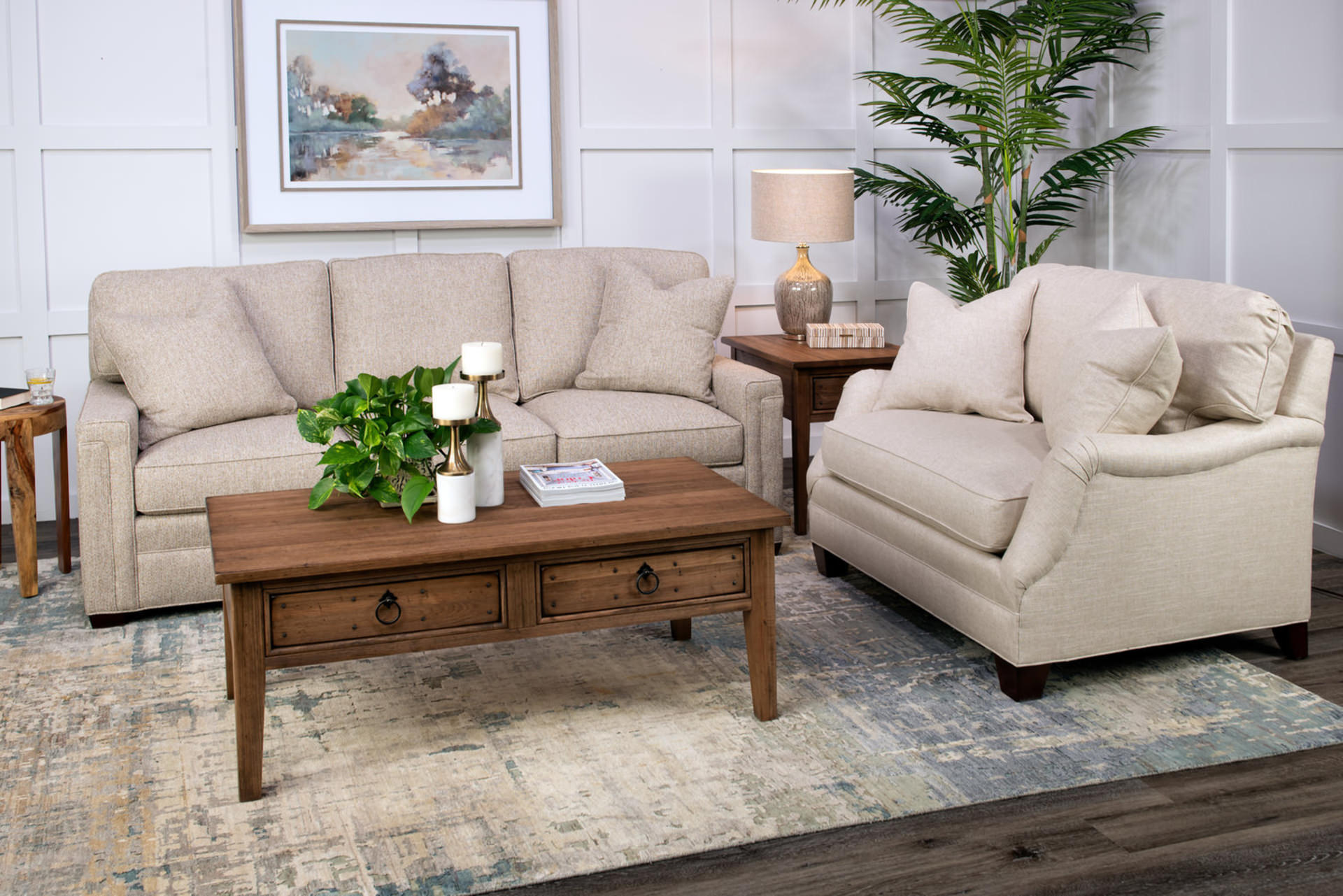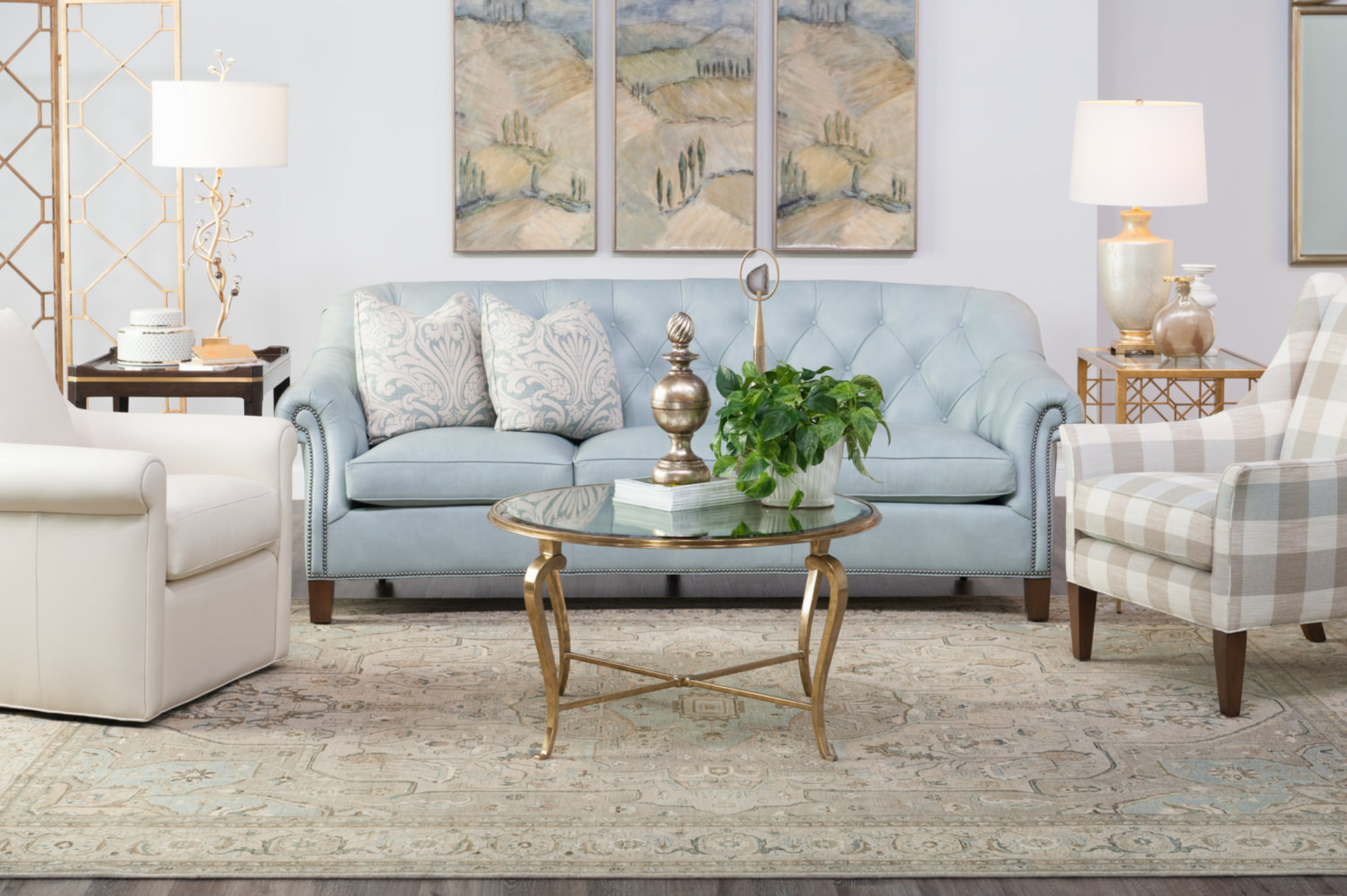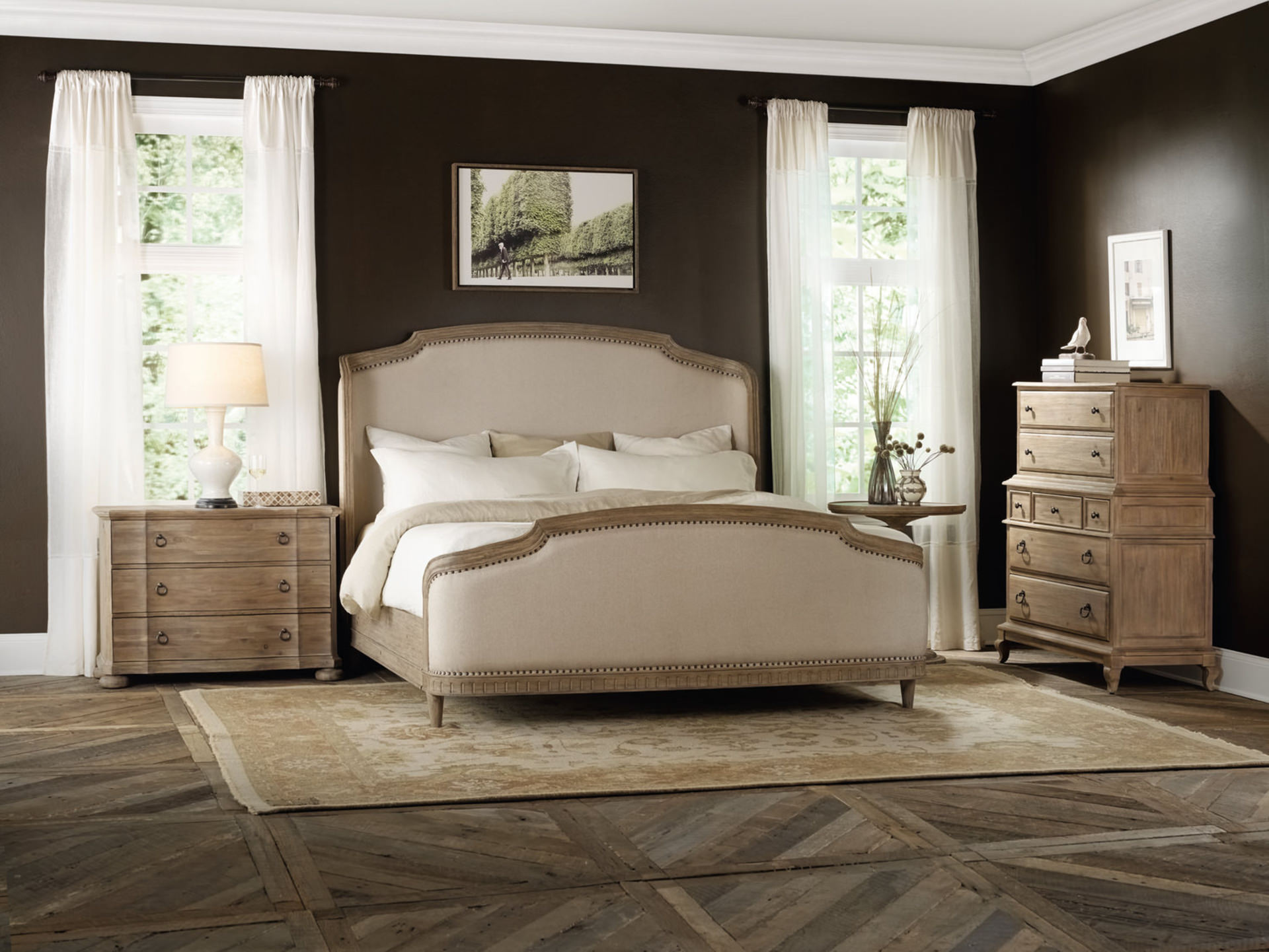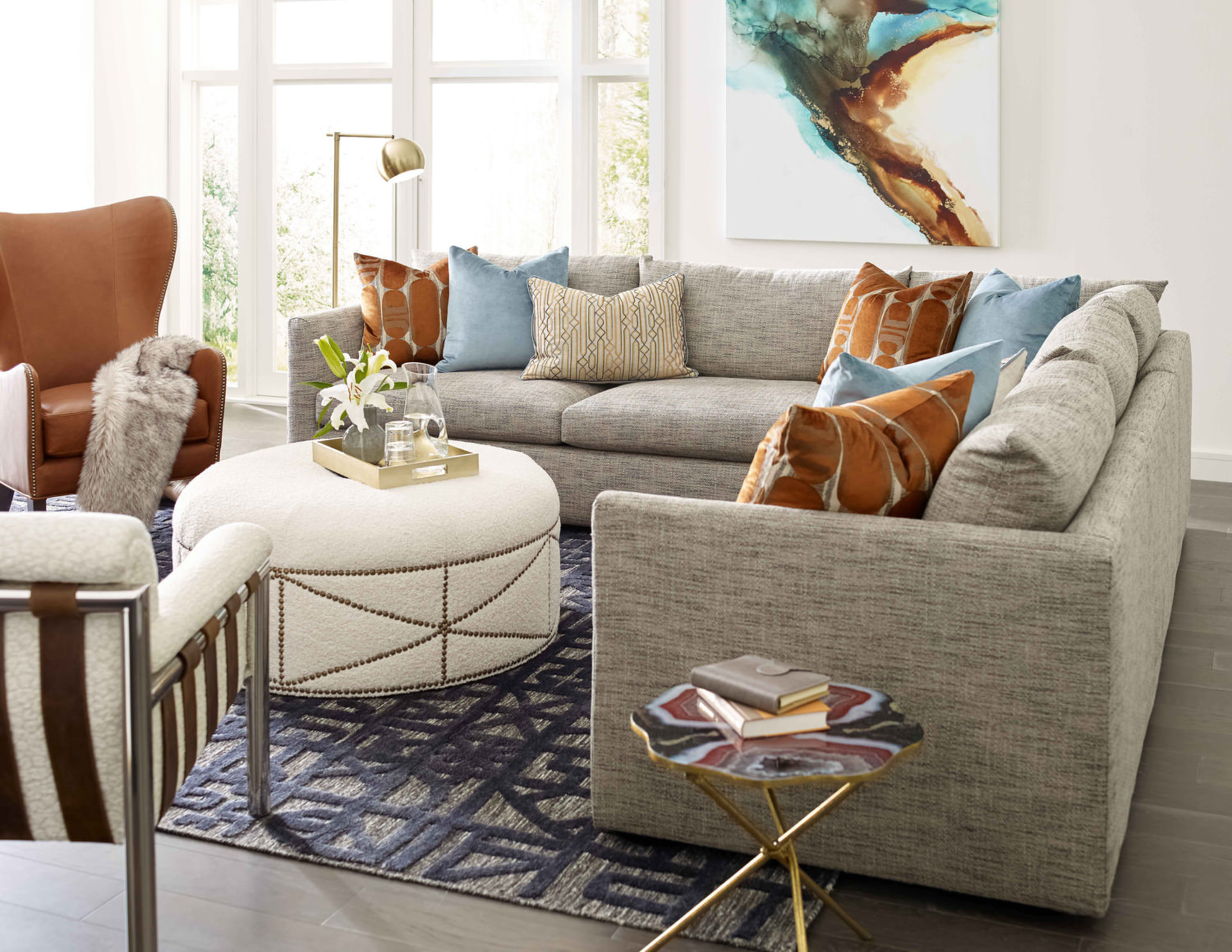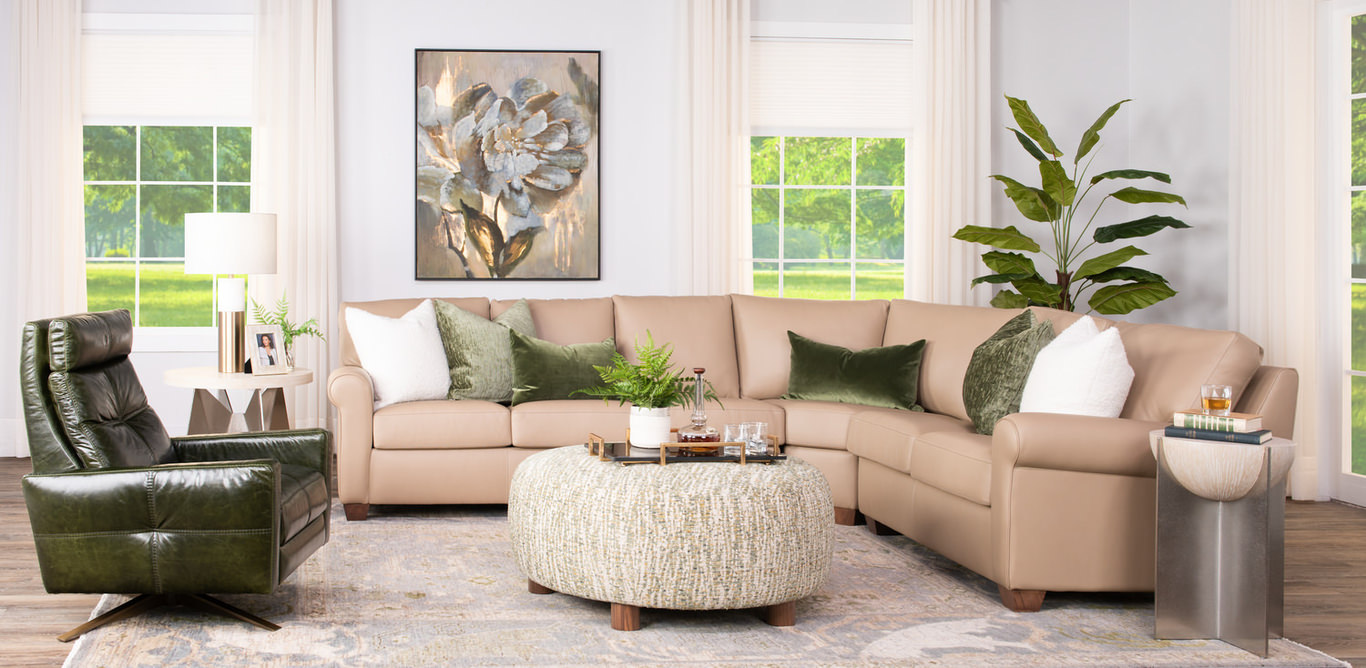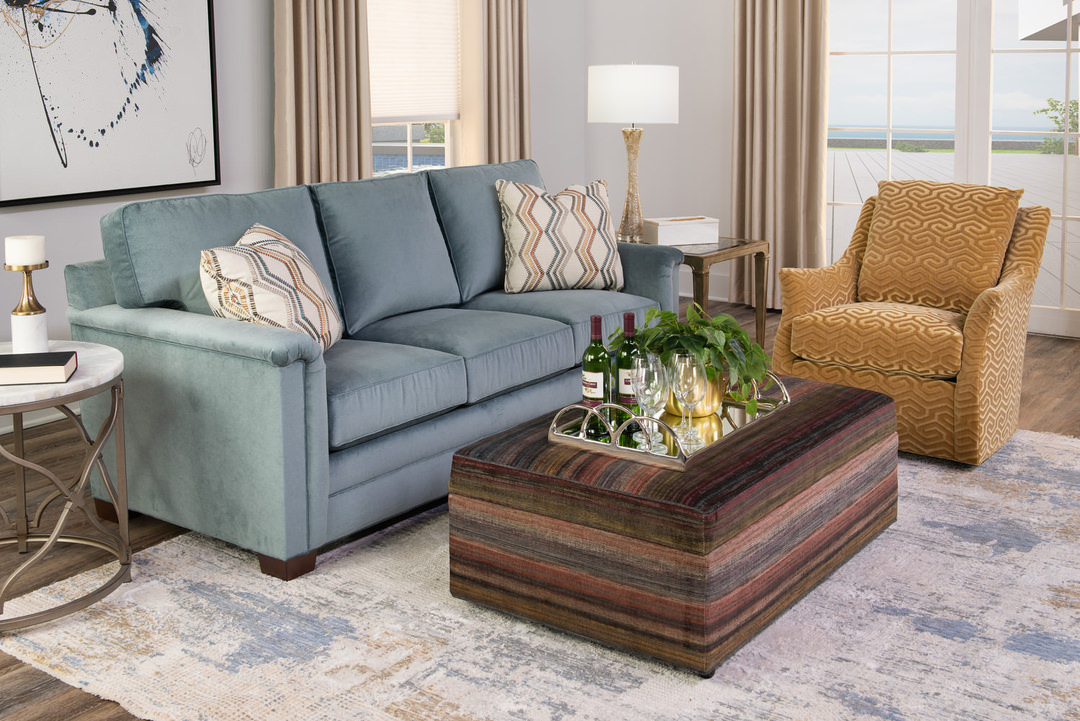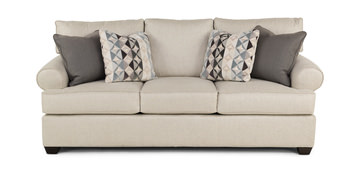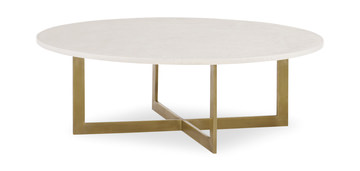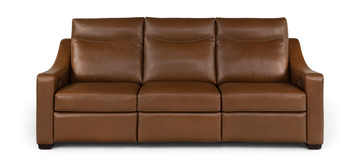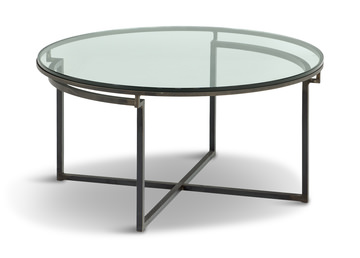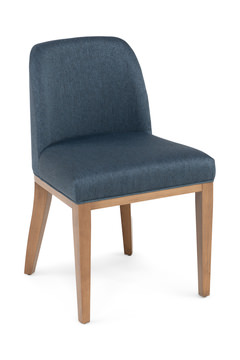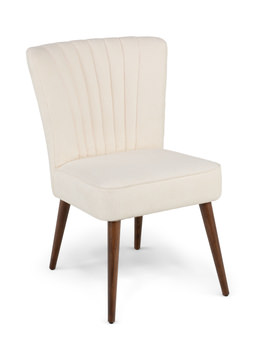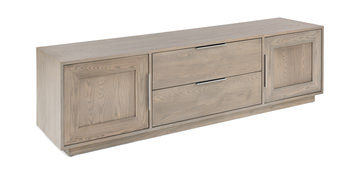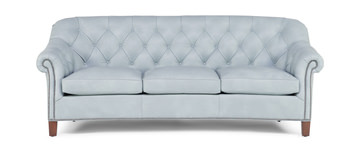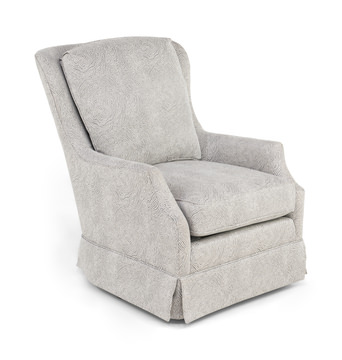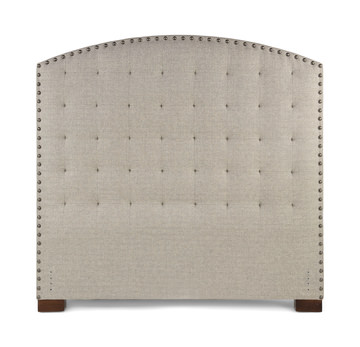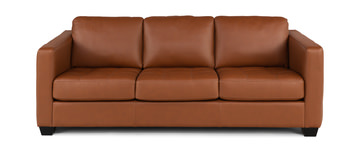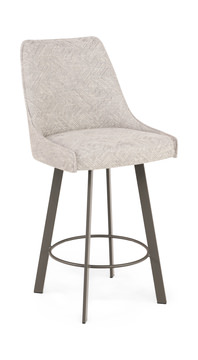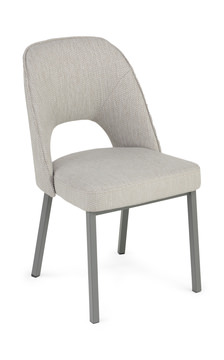Stylish and Sustainable Furniture and Decor
February 2023
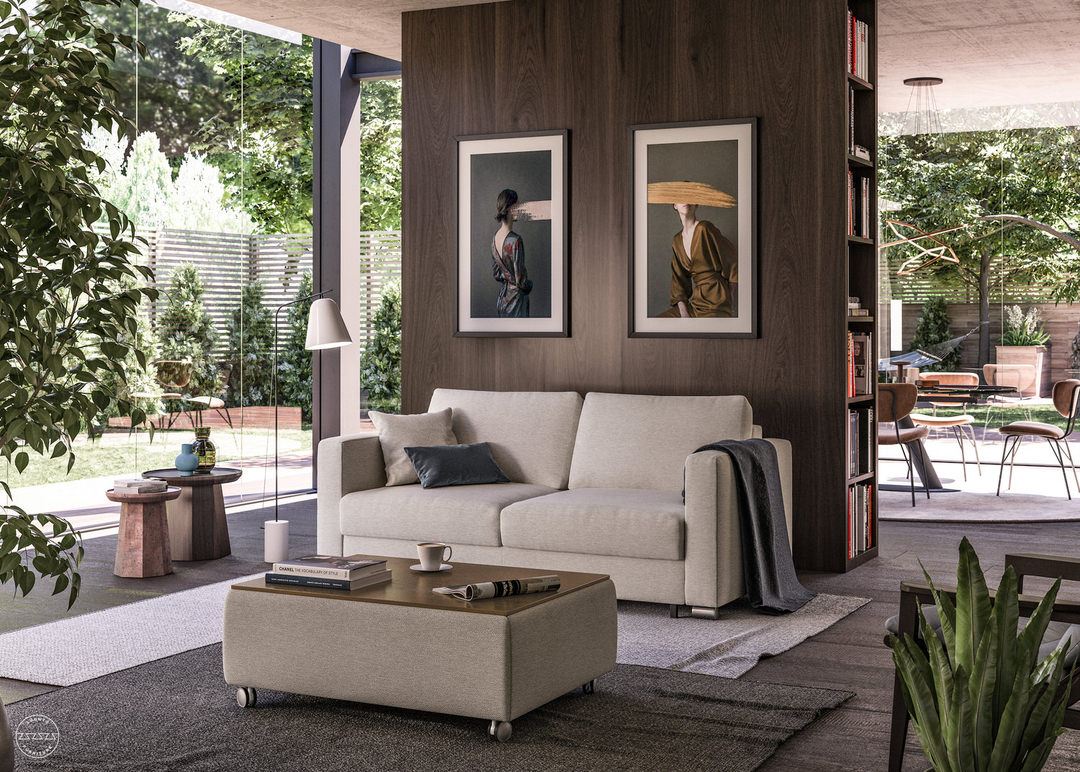
Whether you love traditional design or gravitate towards more contemporary styles, there is one requirement that more and more people have when it comes to shopping for any items for their home. Sustainability is becoming a major factor in many people’s shopping decisions—including groceries, clothing, accessories—and furniture. Whether it’s sofas and other living room furniture, dining sets, bedroom furniture, mattresses, area rugs, flooring or home accessories, many people want a green story that comes along with their purchase.
Eco-friendly furniture has seen an uptick over the past couple of decades, with millennials and now Gen Z-ers leading the demand; and many of the industry’s top furniture manufacturers have responded with a wider offering of sustainable products. While there is a lot of variety in what can be considered “sustainable furniture”, there are some easy ways to define it. First off, to be considered sustainable, pieces should be composed of materials with eco-friendly characteristics. Further, the company should follow environmentally friendly manufacturing processes, which may include lower energy use and more recycling.
Sustainable Sources and Manufacturing
One easy way to learn about a company’s green initiatives is to review their environmental certifications. When it comes to sustainable furniture, the responsible use of natural and renewable resources is one of the principal considerations.
There are several important certifications to be familiar with when it comes to the furniture industry:
- Sustainable Furnishings Council (SFC) promotes the Wood Furniture Scorecard, an annual honor that recognizes businesses that implement policies and practices to drive responsible wood sourcing.
- Enhancing Furniture’s Environmental Culture (EFEC) is the American Home Furnishings Alliance’s industry-specific environmental management program that requires facilities to improve the management of resources and raw materials.
- Forest Stewardship Council (FSC) certified wood furniture, which indicates sustainable practices. This certification requires compliance with various principles and criteria, including the responsible management of resources, the ethical treatment of workers and indigenous peoples, and the conservation of a region’s biological diversity.
Choose Sustainable Materials
In addition to choosing wood that is FSC certified, there are other sustainable material options. For instance, reclaimed wood furniture goes a long way in the phrase: reduce, REUSE and recycle. Bamboo furniture is also trending now for its sustainability and beautiful design options alike.
- Reclaimed Wood Furniture is built using recycled timber from old structures like houses, warehouses, barns, and industrial sites. Reclaimed furniture started to become available in the 1970s, and really started increasing in popularity in the mid-1990s in part due to an increase in modern deconstruction practices over traditional demolition. In the modern era, reclaimed wood furniture has seen tremendous popularity as the green living trend has grown. Along with obvious environmental advantages, reclaimed wood furniture provides similar durability and performance as any other wood furniture options. It also provides unique beauty. Every single piece has a storied history, and each piece is truly one-of-a-kind.
Durability and Longevity Matter
Another important consideration is the life cycle of the product. The process for creating sustainable furniture may involve green practices and policies enacted by eco-minded companies; however, those noble goals mean very little if the product requires constant maintenance and replacement. By investing in durable, heirloom quality furniture in timeless designs, you can reduce the amount of raw materials being used as well as the amount of waste that ends up in landfills. As an added bonus, you can also save money in the long run, by paying more for fine furniture that won’t need to be replaced soon.
Furniture Companies with Green Stories
Today, many of the top furniture companies are leading the industry with eco-friendly policies, processes and products. As a result, there is seemingly no limit to the green furniture and décor options that are available to consumers. In fact, there’s so much sustainable furniture on the market today that it can be hard to narrow down the brands and individual pieces that will work best for your home. To this end, we've put together a list of some of the best eco-friendly furniture options for your home. You can also schedule an appointment with a designer or stop into a furniture showroom to discuss eco-friendly furnishings, and see beautiful pieces up close.
American Leather is known for their modern, American made leather furniture. By keeping manufacturing in the U.S., the company yields a smaller carbon footprint than imported goods. As a founding member of the SFC, American Leather is committed to making their products and manufacturing operations environmentally friendly. For instance:
- Each frame is constructed from wood that is harvested from sustainable forests and precision-engineered to create as little scrap as possible. Remains are recycled or reused.
- Leathers use water-based pigments, and any remaining leather scraps are either recycled or resold for the production of small leather goods.
- Cushions use soy-based foam that is fully recyclable, and they do not use fire retardants in their foam, leather, fabric or ultra-suede.
Bernhardt & Bernhardt Interiors is a well-known name in the furniture industry for a reason. The company has been around more than 130 years, and is committed to local communities and sustainability. The company achieved EFEC certification for five of their U.S. facilities, and divisions are developing programs with environmental groups such as SFI, FSC, and GREENGUARD, or in support of LEED, as appropriate.
Bradington Young commits to being a good steward of the environment through sustainable business practices that help preserve the Earth's beauty and resources. They have joined the SFC and become EFEC certified at their facilities. Sustainability efforts include:
- Leather scraps are 100% resold for use in other industries to minimize waste.
- Cardboard packaging is all recycled and wood chips and sawdust are 100% repurposed for use in the farming industry.
- Pallets are recycled, reused or repurposed.
Classic Home constantly refines their collections through the improvement of both their materials and the techniques in which they are crafted. Many products are FSC Certified; and the company has been a member of the SFC since 2012. Environmentally responsible practices include:
- Plantation grown and repurposed woods are used.
- Water used in production is recycled to support local agriculture.
- Water-based wood sealers are applied to prevent pollution and environmental damage.
Century is also a founding member of the SFC, and all its plants are EFEC certified. They also have FSC Co-certification, work with the Rainforest Alliance, and are Sustainable Forestry Initiative (SFI) Certified. Additional green practices include:
- More than 50% of woods used are US grown.
- Fiber used in pillows and cushions is from recycled material.
- Cushions and poly foam contain the highest possible content of soy oil to replace petroleum based chemicals.
- Metal components contain a significant amount of recycled material.
- Low VOC finishes are used and lacquers have a high solids content.
Charleston Forge products are made from recycled steel; and wood comes from USDA Certified forests. Another eco-friendly practice: 90% of their suppliers are within 100 miles of the factory.
Dinec has adopted a number of practices aimed at maximizing the resources used and reducing the total environmental impact. Their commitment to sustainable development is shown through their durable hardwood furniture that can be passed down to generations, reducing the overall carbon footprint. Additional practices include:
- Wood used in manufacturing comes from forests that are managed properly, in a sustainable and responsible manner.
- All suppliers are certified by the organization overseeing their industry.
- Non-polluting machinery is used in factories, and computer equipment is energy-efficient. Hydropower, a very clean form of energy, is the primary energy source.
Durham Furniture builds solid wood furniture to last for generations with lumber from replenishing North American forests. Durham is a member of the SFC, and they are committed to providing a safe and ethical workplace, and promoting a sustainable community.
Gat Creek is also a founding member of the SFC, with silver exemplary status. The company’s raw material is sustainably harvested from Appalachian forests within a day’s drive of the shop, and they source lumber exclusively through suppliers that meet strict conservation standards. They follow green initiatives at their own facility as well, such as using solar panels to generate electricity and LED lighting to reduce their overall electric consumption.
Hancock & Moore utilizes a combination of locally sourced and sustainable materials. 95% of the lumber used in their furniture is harvested in the United States. The lumber comes from forests that the U.S. Forest Service has certified as being sustainably managed. Additionally:
- Cushions and poly foam contain the highest possible content of sustainable soy oil to replace petroleum based chemicals.
- Metal components contain a significant amount of recycled material.
- Finishes are low VOC, and lacquers have a high solids content.
- Fiber used in pillows and wrapping of cushions is from recycled material.
- Foams are manufactured without the use of fire retardant chemicals.
Hooker commits to being a good steward of the environment through sustainable business practices that help preserve the Earth's beauty and resources. They are a member of the SFC and are EFEC certified at their facilities. Additional green practices include:
- All leather scraps are resold for use in other industries to minimize waste.
- All cardboard packaging is recycled; wood chips and sawdust are repurposed for use in the farming industry.
- Pallets are recycled, reused or repurposed.
- An environmental education program at Stanleytown Elementary School located in Stanleytown, Virginia was established to educate the youth within the community about the role they can play in taking care of the environment.
Huntington House was a “green” company long before that became a trending buzz word. They are a member of the SFC and continuously strive to find new ways to improve manufacturing practices to have a positive impact on the planet. To reduce waste incurred in transportation, Huntington House first seeks materials that are produced locally, then domestically and finally internationally. The company has stringent recycling policies and strives to use environmentally responsible materials in in products, such as:
- Seat cushions and foam padding contain preserve foam (20% soy based, and fiber wrap is made from 80% regenerated fiber).
- Springs and strapping are made from 98% recycled steel and finishes are water-based. Packaging is 100% recycled cardboard.
Jessica Charles works towards sustainability starting with its raw materials. 95% of the lumber used in their furniture is harvested in the United States from forests that the U.S. Forest Service has certified as being sustainably managed. Eco-friendly properties also include:
- All sources of wood product must certify as to the legality of their harvest.
- Cushions and poly foam contain the highest possible content of sustainable soy oil.
- Metal components contain a significant amount of recycled material.
- Finishes are low VOC and lacquers have a high solids content.
- Fiber used in pillows and wrapping of cushions is from recycled material.
- Foams are manufactured without the use of fire retardant chemicals.
Luonto, located in Finland, has a proud history of sustainable manufacturing processes. Finland maintains very strict environmental standards. Roughly 80% of the country is lake and forest, which puts a big emphasis on sustainability in the culture. Their sustainable practices are not simply part of a trend, but rather done simply because it’s who the company is and a large part of their heritage.
Massoud furniture is made in the U.S. The company purchases all materials from domestic sources; the wood, fabric, springs, foam and nails all originate in America.
Precedent Furniture has widespread green initiatives, including:
- Frames are made from wood that has been grown in the U.S. and is certified by the Sustainable Forestry Initiative.
- Frames are very low in formaldehyde, less than 0.1 parts per million, well below the maximum set by California Air Resources Board.
- Cushions use 20% BIOH Polyol.
- Polyester padding is 80% to 100% recycled material.
- All metal parts are produced from a minimum of 95% recycled steel.
- Water-based, formaldehyde-free glues are used.
- All packaging and shipping materials are 100% recyclable.
Sherrill Furniture Companies manufacture products with a large emphasis on sustainability. A tremendous focus is concentrated on the components used to manufacture their products. Sherrill strives to lower its energy and water consumption. When possible, the company sources recycled material components.
- All sourced lumber is TSCA Title VI compliant.
- Foam products are required to meet TB117-2013.
- Sourced fabrics follow the same guidelines.
Trend Point P embodies business practices that promote the long-term preservation and enhancement of natural resources. They are committed to creating a culture that goes beyond merely meeting regulatory requirements. Their furniture is made to last for generations, and they follow green practices, including:
- Leather is produced with reduced use of water, energy and finishing chemicals, when compared to typical leather production.
- All of their adhesives are water based.
- No flame retardants are used in fabrics, plastics, foam or electronics.
- Ethically sourced and recycled materials are utilized.
- Foam is Certi-PUR certified.
Rowe has made a solid commitment to eco-friendly manufacturing processes and sustainable product development. The company focuses on sourcing fabrics produced from natural fibers, renewable fibers and the use of wood from replenished, domestic forests for the frames. Additional green materials and practices include:
- Eco-cushion core contains plant-based, renewable materials, which replace significant amounts of petroleum-based materials used in standard foam cushions.
- Eco-down blend cushion core is a modern combination of high-resiliency foam, with recycled fiber and a blend of duck feather and down.
- Eco-friendly materials include: 100% recycled paperboard for arm cardboard, down cushion filler made from recycled plastic bottles, springs made from recycled iron ore, uncoated nails and screws, and recycled cotton.
- A percentage of Polyol plant-based chemicals are used in their cushions instead of petroleum-based chemicals.
- Foam is manufactured without the use of any flame retardants.
Trica recognizes its responsibility as a global citizen and is continually striving to reduce the environmental impact of the work they do and the products they create. For instance, Trica uses recycled and recyclable steel, aluminum and plastic along with paint that is lead and VOC-free.
Vanguard has been a member of SFC since 2007. Their green initiatives include the use of solar panels on some facilities and a plan to convert fully to solar power to reduce their carbon footprint.
- Bulk of the waste created during the manufacturing process is recycled by Vanguard, rather than being sent to landfills.
- Majority of Vanguard case goods have panels with cores that are sourced from certified well-managed facilities according to the Forest Stewardship Council.
- Textile line includes many eco-friendly fabrics that are made of natural fibers or blends of recycled polyester components.
With these industry-leading brands that are paving the way in greener practices, there are myriad options for anyone who is seeking sustainable furniture along with style.
